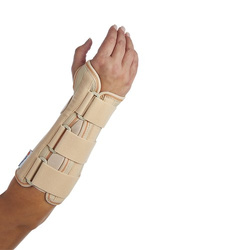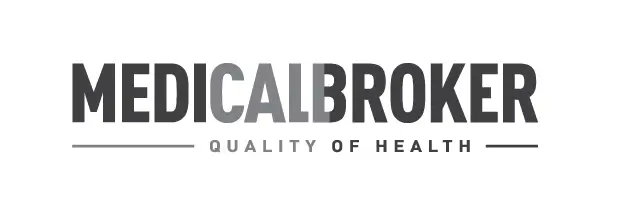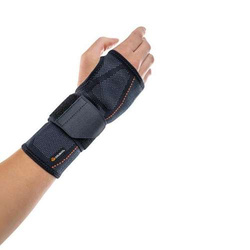Wrist braces
( number of products: 52 )Carpal tunnel? Not with a wrist brace
Carpal tunnel syndrome, wrist sprains and joint abnormalities are just some of the conditions a well-chosen wrist brace can help treat. Read on and find out just how they work, the variants and if this support brace is right for you.
Wrist braces - who are they for?
Wristbands and wrist braces are some of the most popular medical devices worn by both by people who suffer from wrist-related injuries, as well those who have physically demanding professions or practice sports. A wrist brace is often used to treat injuries to the wrists, which mainly include sprains, dislocations, carpal tunnel syndrome and other injuries. Wrist braces may be recommended as an alternative to a plaster cast if the injury isn’t too serious.
They may also be worn after surgery on the wrist joint and the radius. Wrist braces are also recommended for patients who are recovering from surgery on complicated fractures, as well as all activities related to abnormal joint functioning and soreness. A wrist brace in this case is usually made to be stiff.
Wrist braces are often used for treating wrist isthmus syndrome, carpal tunnel, inflamed tendons and may be utilised as a form of therapy when a person suffers from sports related injuries. It is also recommended to help repair soft tissue damage.
How do wrist braces work?
How a wrist support functions depends on the patient’s condition. Most standard wrist braces have a built-in removable stiffener, which guarantees significant stabilization of the joint itself, but also the radial bone. In any case, a wrist support brace guarantees the mobility of the fingers, usually all of them, which helps to facilitate the performance of daily activities.
The wrist support provides added stabilization that significantly reduces the risk of damage to the joint during daily activities, as well as during sleep. By immobilizing damaged tissues, there is no recurring inflammation, thus significantly accelerating the regeneration of those tissues.
Some wrist supports also provide an additional thumb stabilizer that helps to effectively treat atypical fractures and sprains of this finger. Finger mobility, which is provided in most wrist braces is vital for the rehabilitative process, as it reduces the possibility of degeneration and allows the patient to use them under the guidance of a specialist.
In most cases, a well-fit wrist brace may exert gentle pressure on affected points on the wrist, which significantly reduces pain in the hand and wrist. Some wrist braces have additional, removable pelottes that facilitate this type action. Once damaged joints and bones are immobilized, the patient can experience reduced swelling at the site of injury.
How to choose the right wrist brace?
All medically approved wrist braces are made of high-quality and certified materials, guaranteeing the wearer comfort of use and a proper recovery from injuries and any operations. What's more, the wrist brace is usually made of materials that are easy to clean, do not cause irritation, allergic reactions or abrasions.
When deciding on a brace that’s right for you, remember to choose one that will help with your current condition and make sure that it is the right size. Most standard bands are universal, so you can wear them on either wrist. More developed stabilizers need to be matched to either the left or right wrist due to their structure. Make sure to measure your wrist circumference before choosing the right wrist support in order for it not to be too loose or too tight.

Emo ART100 Ortec bracing for arthritic hand

Long, wrist support with rigid palmar splint One Plus Orliman


















